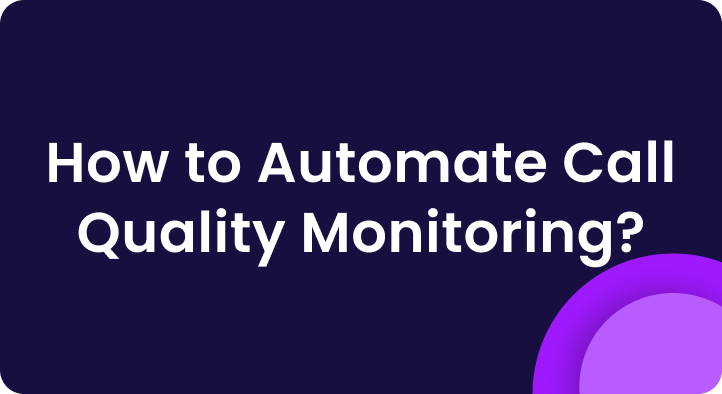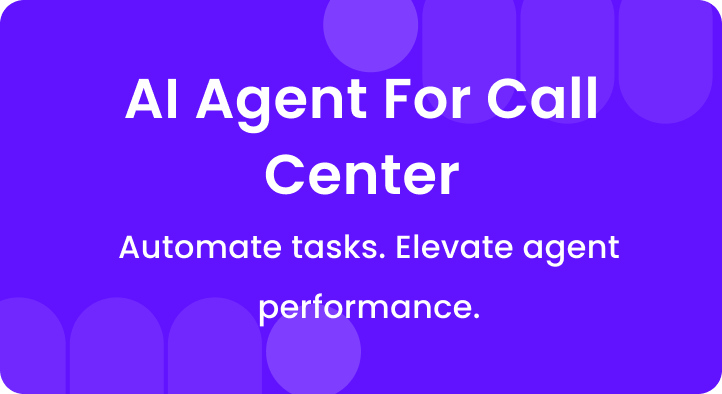Ever feel like you’re delivering great service but still losing customers?
You’re not alone. Many support and Quality assurance teams rely on instinct, not data.
They miss the signals until it’s too late, a bad review, a canceled subscription, or worse, churn without warning.
That’s where CSAT, short for Customer Satisfaction Score, comes in.
It’s a fast, reliable way to measure how your customers actually feel, right after they interact with your business.
Still wondering, “What does CSAT stand for?” or “How can I check my CSAT score?” We’ll cover all of that and more.
Whether you’re running a full-scale CSAT program or just getting started with your first survey, this guide will help you track and improve satisfaction at every touchpoint.
A. What is CSAT? What does CSAT stand for, and why does it matter
At its core, CSAT stands for Customer Satisfaction Score, a simple but powerful metric that shows how happy your customers are with a product, service, or interaction.
CSAT’s meaning goes beyond just a number. It’s the voice of your customers telling you what’s working and what needs fixing.
In fact, companies with high CSAT scores often see up to 25% higher customer retention rates compared to those with poor scores.
That means happier customers stick around longer, buy more, and even recommend you to others.
Most businesses use a CSAT platform or survey tool to collect this feedback.
These platforms make it easy to ask the right questions, gather responses, and calculate your score automatically.
For example
A SaaS company might send a CSAT survey right after a support call, asking customers to rate their satisfaction from 1 to 5.
Why does this matter?
Because without measuring customer satisfaction, you’re flying blind.
Imagine trying to fix a problem without knowing where it is.
CSAT helps you pinpoint exactly where you’re shining and where you’re slipping.
B. How to measure CSAT: A simple step-by-step guide
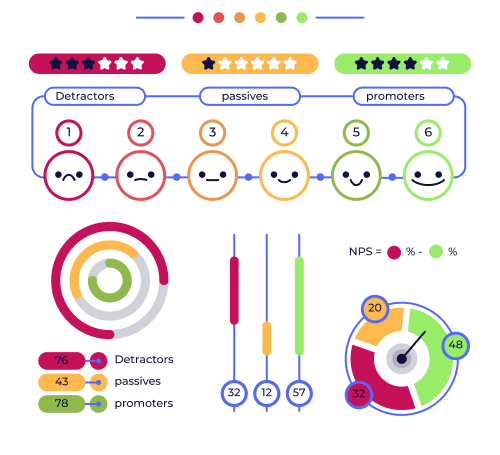
Measuring Customer Satisfaction (CSAT) is simple. Just follow these steps:
1. Ask a simple satisfaction question
Use a question like:
“How satisfied were you with your recent experience?”
Then give customers a 5-point scale to answer:
- 1 = Very Unsatisfied
- 2 = Unsatisfied
- 3 = Neutral
- 4 = Satisfied
- 5 = Very Satisfied
You can ask this after a support call, a product delivery, or any key moment in the customer journey.
Pro tip💡: Tools like Google Forms or customer feedback software make it easy to set up CSAT surveys in minutes.
2. Collect responses from your customers
You can gather CSAT scores through:
- Email surveys (e.g., after a support ticket is closed)
- Popups on your website (e.g, after completing a purchase)
- SMS or mobile in-app prompts
Example
An e-commerce company might trigger a CSAT survey via email two days after a product is delivered.
3. Calculate your CSAT score
Here’s the CSAT formula made simple:
CSAT Score (%) = (Number of customers who chose 4 or 5 ÷ Total responses) × 100
You’re only counting satisfied (4) and very satisfied (5) ratings.
Example: Let’s say: Your CSAT score would be: (80 ÷ 100) × 100 = 80%
So, 80% of your customers were satisfied with their experience. That’s a strong score in most industries!
C. When and how often should you measure CSAT?
Timing matters when asking customers for feedback. The goal is to capture their feelings while the experience is still fresh, but without overwhelming them.
When to measure CSAT:
- Right after a specific interaction: For example, immediately following a customer service call or a product purchase. This is when CSAT shines as a “right here, right now” metric.
- After key milestones: Like after onboarding, first use of a product, or renewal of a subscription. This helps you understand satisfaction at critical points.
How often should you measure CSAT?
- Avoid survey fatigue. Don’t ask the same customer too often. Frequent requests can annoy customers and lower response rates.
- Set a frequency that fits your business: For a fast-moving e-commerce store, daily or weekly surveys might work. For longer-term services or subscriptions, monthly or quarterly surveys could be enough.
Example:
A software company like Zendesk sends a CSAT survey right after each support ticket closes but also surveys customers quarterly about their overall experience.
D. What is a good CSAT score?
A CSAT score is just a number that shows how happy your customers are.
It’s based on how they answer a quick survey, usually asking how satisfied they were with your product or service.
The higher the score (closer to 100%), the more satisfied your customers are.
Once you start collecting CSAT data, the big question is: What score should I aim for?
1. Understanding your CSAT score
There’s no universal “perfect” CSAT score, it varies by industry, company size, and customer expectations.
But here are some useful guidelines:
- Above 75%: Generally considered good and shows strong customer satisfaction.
- Above 85%: Excellent, often indicates loyal, happy customers.
- Below 70%: Signals room for improvement; you may need to dig deeper into customer feedback.
2. Benchmarks to compare against
Using industry benchmarks can help you set realistic targets.
For example, according to the American Customer Satisfaction Index (ACSI), the average CSAT scores for these sectors are:
| Industry | Average CSAT Score |
| Retail | 78% |
| Telecommunications | 64% |
| Healthcare | 75% |
| Utilities | 68% |
3. Track your progress over time
More important than a single score is the trend.
Is your CSAT score improving? Staying steady? Declining?
Regular measurement helps you spot issues early and celebrate successes.
E. What are the pros and cons of CSAT?
| Pros | Cons |
| Easy to measure – one simple question gathers quick feedback. | Relies on self-reporting – mood and bias can skew results. |
| Customer-friendly – short and simple, increasing response rates. | Lacks detail – doesn’t explain why customers feel a certain way. |
| Provides clear numerical data, making analysis straightforward. | Individual perspective only – may miss group or family opinions. |
| Widely recognized – allows benchmarking across industries. | Response bias – mostly very happy or unhappy customers respond, leaving out neutral voices. |
Example:
A telecom company had high CSAT scores but discovered recurring complaints through follow-up calls, highlighting the need for qualitative feedback alongside scores.
F. How to use CSAT effectively
Knowing your CSAT score is just the beginning. To get real value, you need to act on what it tells you.
Here’s how to turn feedback into action:
1. Close the feedback loop
If a customer leaves a low score, follow up. Ask what went wrong. Then fix the issue and let the customer know you did.
Pro tip: Companies that follow up within 24 hours see a 15–20% increase in retention rates.
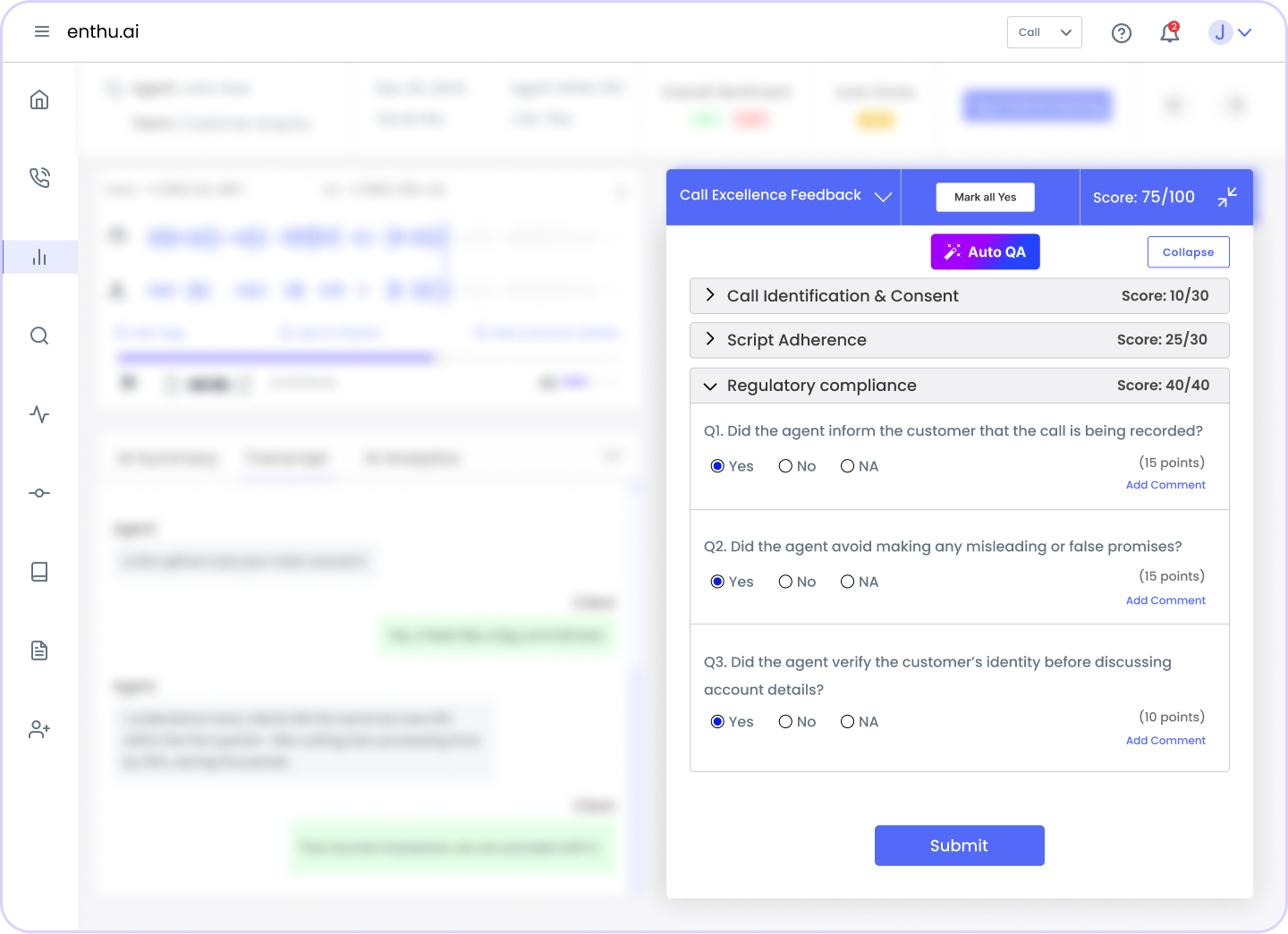
2. Segment by interaction type
Don’t lump all CSAT responses together. Segment by:
- Product vs. support experience.
- Web vs. phone interactions.
- First-time vs. repeat customers.
- This gives you clear insight into what areas need improvement.
3. Use CSAT in agent coaching
Are low CSAT scores linked to certain agents? Review call recordings and coach those agents with specific examples.

4. Benchmark and track over time
Look at trends. Are scores rising after product updates? Dropping after policy changes? Tracking CSAT regularly helps you tie improvements to actual results.
Example After streamlining their checkout process, a US retail brand saw CSAT jump from 72% to 88% in one quarter. Use CSAT alongside NPS and CES to get the full picture: Together, they help you understand what’s working and what’s not. CSAT, NPS, and CES are all important ways to understand customer experience, but each measures something different. Why It Matters Customer satisfaction isn’t a “nice-to-have,” it’s a growth lever. CSAT helps you measure how your customers truly feel right now. But more importantly, it tells you where to improve, who needs support, and how to boost loyalty and revenue. Whether you’re running a call center, managing a support team, or leading CX strategy, tracking CSAT regularly and acting on it will give you a real competitive edge. Tip: Use a platform like Enthu.AI to automatically track CSAT scores, spot coaching opportunities, and connect customer sentiment to your bottom line. 1. What is CSAT? CSAT stands for Customer Satisfaction Score. It measures how satisfied a customer is after a specific interaction, such as a purchase, support call, or service experience. CSAT is usually collected by asking: “How satisfied were you with your experience?” Customers respond on a scale (e.g., 1 to 5), and the CSAT score is calculated like this: CSAT = (Number of satisfied responses ÷ Total responses) × 100 A higher CSAT means better customer satisfaction and service quality. 2. How is CSAT different from NPS and CES? CSAT, NPS, and CES are all customer experience metrics, but they measure different things. Use CSAT for transactional feedback, NPS for brand sentiment, and CES to improve service processes. 3. What is a good CSAT score? A good CSAT score is typically between 75% and 85%, meaning most of your customers are satisfied or very satisfied. But it depends on your industry: If your score is below average, focus on improving support response time, agent training, and clarity in communication. 4. How often should you measure CSAT? After every major interaction, calls, tickets, product delivery, onboarding. 5. How do I know if my CSAT score is good? The industry average is around 75 to 80 percent. Anything above 85 percent is considered excellent. 6. Can I automate CSAT surveys? Yes. Tools like Enthu.ai make it possible to trigger surveys based on specific call outcomes or customer signals.5. Combine CSAT with other metrics
G. CSAT differs from NPS and CES?
Metric What It Measures Focus Question Example CSAT Customer satisfaction with an interaction or product Short-term, “here and now” experience “How satisfied were you with your recent purchase?” NPS (Net Promoter Score) Customer loyalty and likelihood to recommend a brand Long-term loyalty and brand perception “How likely are you to recommend us to a friend?” CES (Customer Effort Score) How easy it was for a customer to complete a task Customer effort during an interaction “How easy was it to resolve your issue today?”
Conclusion: CSAT is more than just a score
FAQs
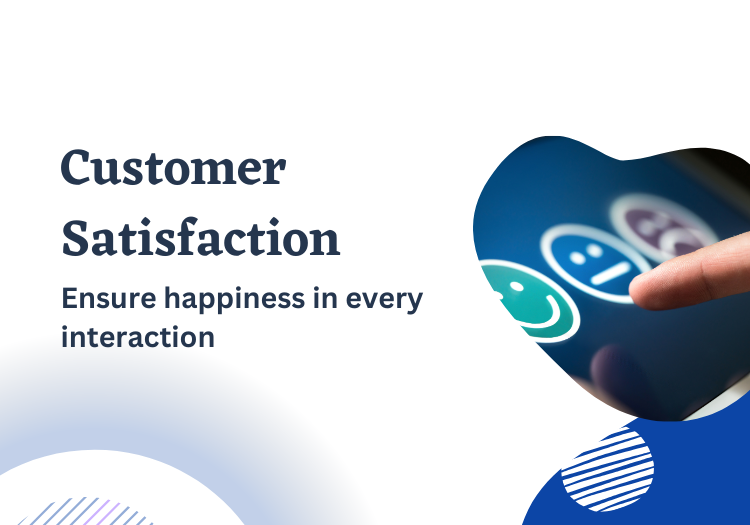
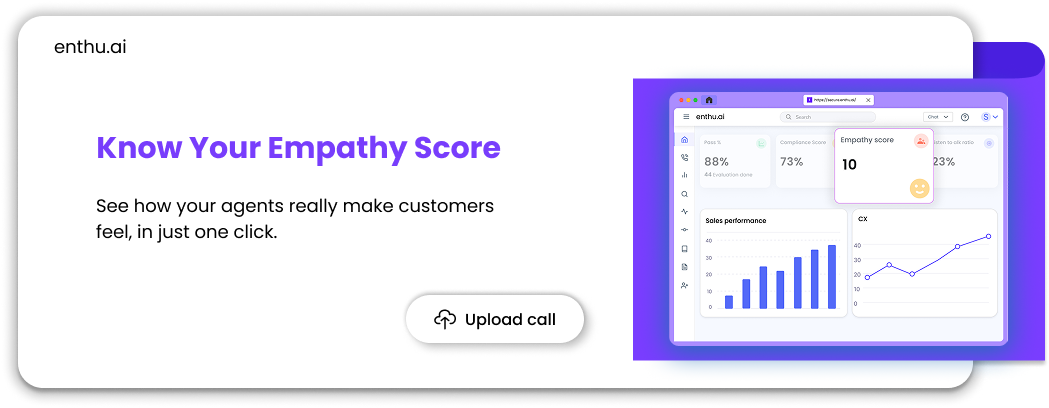


 On this page
On this page
